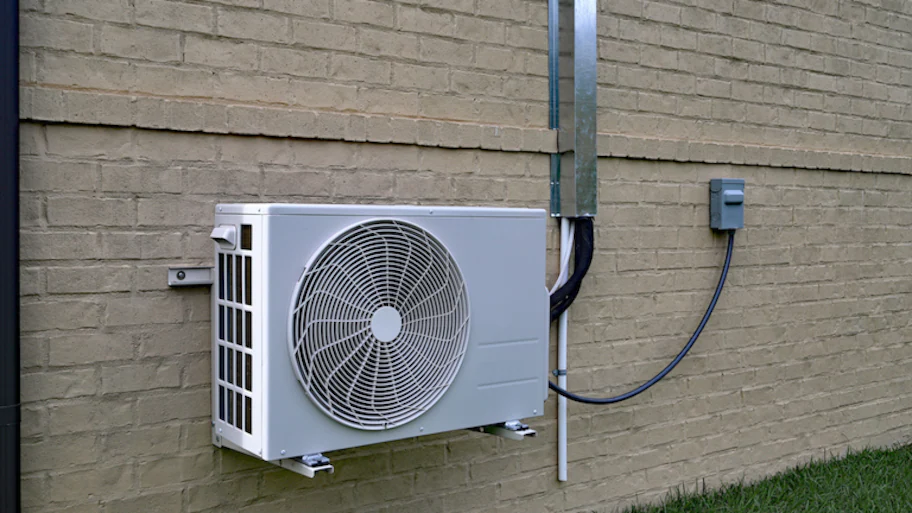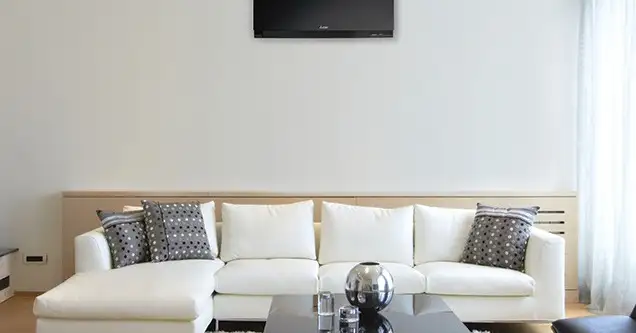When it comes to many HVAC systems, the installation is a process that’s best left to professionals to handle. Most of the steps involve long steps and modifications to the building that require precise work to ensure no damage is done to the infrastructure. However, when it comes to mini split air conditioners, you might find that the process isn’t as difficult if you learn how to do it well.
If you’re looking into installing a mini split system by yourself, doing so actually saves you money. Some systems can allow you to install the individual units yourself before calling a professional to connect the units and start it for you. Other companies offer you a fully do-it-yourself kit to allow you to install the entire air conditioner system yourself. Combined with the fact that mini splits save you money due to being far more energy-efficient when compared to central heating and cooling.
This article covers all you need to know about installing your own mini split air conditioner for your home. And to learn more about mini splits installation in Phoenix, visit AHWA.
Indoor placement considerations
As with many HVAC systems, you need to carefully consider many factors before you start installing a mini split system for your house. Due to the indoor unit being a separate object of its own, you will need to make room in whatever space you plan to place it in.
Placement and Height
When looking into placing the mini split ac, make sure to choose a wall that’s strong enough to support the indoor unit while it’s on. The sturdiness of the wall is what makes sure that the unit can be supported well while also reducing the noise made by the machine vibrating. Additionally, make sure that the unit is at least 7 feet off of the ground for better cooling.
While it’s best to check with your mini split’s installation manual to clarify the exact clearance the unit needs, make sure you also have easy access to the filter and its shutters – otherwise called the louver. When it comes to dusting the unit or changing its filters, it’s better to keep it in a spot that’s easy to reach.

Your room’s aesthetics
When it comes to HVAC systems, mini splits are likely to be one of the more aesthetically appealing. However, many homeowners would rather not have the indoor unit be the main focal point of the room they place it in, be sure to choose a spot that you choose a proper area that hides it. Do make sure that the cooling isn’t blocked by anything surrounding it.
Keep it away from heat and other appliances
Make sure that the spot you pick is away from any surrounding appliances. This is especially needed for electrical devices like TVs or computers since condensation from its use might fall and damage the electronics. The recommended distance is at least one meter or three feet between the mini split and any surrounding objects.
Also, be sure to keep the mini split away from any other heat sources. This includes direct sunlight, as it’s more than likely going to cause the indoor unit to overheat and fail, if not outright burst.
Placing the outdoor unit
Similar to the need for a sturdy wall to place an indoor unit, you need to make sure that the spot you choose for your condenser can support the weight of the outdoor unit as well.
Create a sturdy foundation
The average weight of a condenser unit can be anywhere between 80 to 250 pounds – about 36 kg to 113 kg. Because of this weight, any soft ground underneath will shift and potentially damage any connections you make.
To make sure the condenser unit is properly secure, it’s suggested to lay a slab of concrete down before placing the condenser down. To further help secure the unit, the condenser can also be mounted with anchor bolts. If you can’t mount it to concrete by yourself, the market offers pre-made condenser pads that are specially designed to support the unit’s weight. However, do make sure that the ground underneath is appropriately level.
Protect the condenser from the wind
Heavy wind can negatively affect how effective the condenser unit runs. Strong enough wind can knock the unit over or even slow or stop the fan inside. While you can essentially place the condenser wherever is the most convenient for the indoor unit to work effectively, the outdoor unit must still be secured well to the walls or ground.
If you live in an area with high wind speeds, it’s also strongly suggested to build a barrier to protect the condenser unit. Typically, these barriers need to be made with a strong material like concrete to block any incoming wind. The overall dimensions of the barrier should also be at least 50% larger in both width and height when compared to the condenser itself. It should be placed about 30 inches away to maximize the air flowing into the system, as well.
Cover the condenser from the weather
Fortunately, rain doesn’t have a major impact on how efficient a mini split system works. Though, do make sure to note where water may pool on the days your county gets rain. The condenser unit should never be placed in an area that is likely to have standing water, despite the unit being water-resistant. If you’re unsure about whether or not the rain may pool up and affect the condenser, mounting the unit on your rooftop is also a good alternative. Additionally, you can install hoods a minimum of 40 inches above or around the unit to protect it further, whether it’s from rain or incoming dust storms.
Conclusion
When it comes to installing a mini split system by yourself, make sure you have all the proper tools you need to make sure that your installation is both correct and beneficial to your home. Take careful consideration into where you want to place the units and what environmental hazard may potentially damage the units before taking steps to prevent it.






